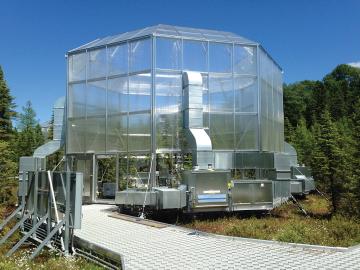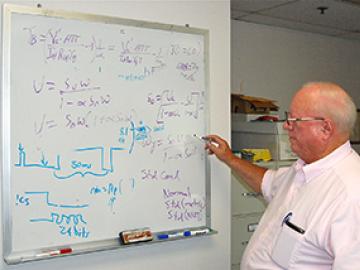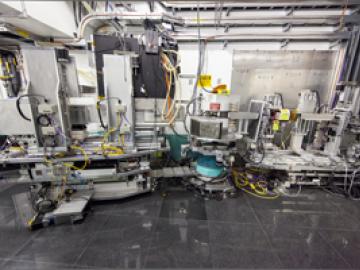Filter News
Area of Research
- (-) Climate and Environmental Systems (14)
- (-) Fossil Energy (3)
- (-) Sensors and Controls (5)
- Advanced Manufacturing (34)
- Biological Systems (18)
- Biology and Environment (177)
- Biology and Soft Matter (5)
- Building Technologies (12)
- Chemical and Engineering Materials (4)
- Chemistry and Physics at Interfaces (11)
- Clean Energy (522)
- Computational Biology (6)
- Computational Chemistry (5)
- Computational Engineering (5)
- Computer Science (19)
- Data (1)
- Earth Sciences (1)
- Electricity and Smart Grid (3)
- Energy Frontier Research Centers (14)
- Energy Sciences (5)
- Fuel Cycle Science and Technology (3)
- Functional Materials for Energy (16)
- Fusion and Fission (54)
- Fusion Energy (17)
- Geographic Information Science and Technology (3)
- Isotope Development and Production (3)
- Isotopes (35)
- Materials (433)
- Materials Characterization (2)
- Materials for Computing (36)
- Materials Synthesis from Atoms to Systems (13)
- Materials Under Extremes (12)
- Mathematics (1)
- National Security (79)
- Neutron Data Analysis and Visualization (4)
- Neutron Science (190)
- Nuclear Science and Technology (74)
- Nuclear Systems Modeling, Simulation and Validation (3)
- Nuclear Systems Technology (1)
- Quantum Condensed Matter (4)
- Quantum information Science (9)
- Reactor Technology (1)
- Renewable Energy (4)
- Supercomputing (311)
- Transportation Systems (11)
Media Contacts

A team led by the Department of Energy’s Oak Ridge National Laboratory has identified a novel microbial process that can break down toxic methylmercury in the environment, a fundamental scientific discovery that could potentially reduce mercury toxicity levels and sup...

Electric utilities seeking to enhance worker safety and system reliability by using drones to inspect their transmission systems can look to a new report by Oak Ridge National Laboratory researchers to help guide their efforts. The report by ORNL’s Unmanned Aerial Systems Research Ce...

Scientists at the Department of Energy’s Oak Ridge National Laboratory have found a simple, reliable process to capture carbon dioxide directly from ambient air, offering a new option for carbon capture and storage strategies to combat global warming.
Initia...

Deep stores of carbon in northern peatlands may remain stable despite rising temperatures, according to a team of researchers from several U.S.-based institutions. And that is good news for now, the researchers said. Florida State University ...

In a new twist to waste-to-fuel technology, scientists at the Department of Energy’s Oak Ridge National Laboratory have developed an electrochemical process that uses tiny spikes of carbon and copper to turn carbon dioxide, a greenhouse gas, into ethanol. Their findin...

Oak Ridge National Laboratory researchers have produced the next generation of the National Hydropower Map – a visualization tool that provides updated statistics on overall capacity and performance on the nation’s hydropower fleet. The map is part of the lab’s National Hydropower ...

depth, population-based approach to identifying such mechanisms for adaptation, and describes a method that could be harnessed for developing more accurate predictive climate change models. For the U.S. Department of...

In the early 1980s, the Department of Energy’s Oak Ridge National Laboratory was just beginning to explore transfer of technology from the lab to industry. Now it's the norm, and one historical example illustrates the long-term benefits.

Thomas Wilbanks and Benjamin Preston, both of the Climate Change Science Institute (CCSI) at Oak Ridge National Laboratory (ORNL), are among the 309 coordinating lead authors of the Intergovernmental Panel on Climate Change’s (IPCC’s) Working Group II (WG II) report.

Carbon dioxide in the atmosphere may get the lion’s share of attention in climate change discussions, but the biggest repository of carbon is actually underfoot: soils store an estimated 2.5 trillion tons of carbon in the form of organic matter.




